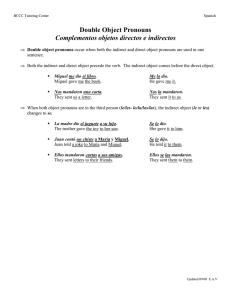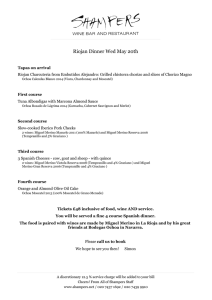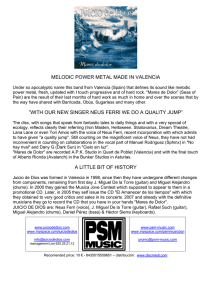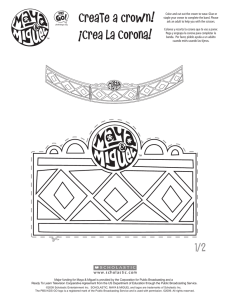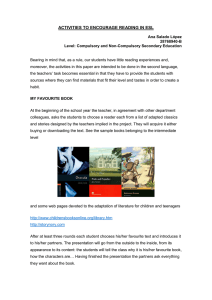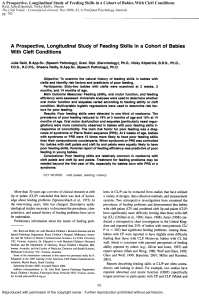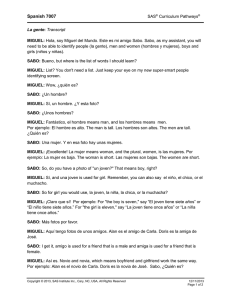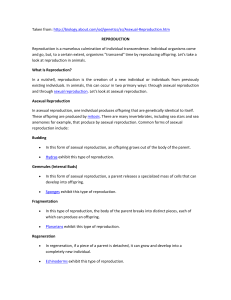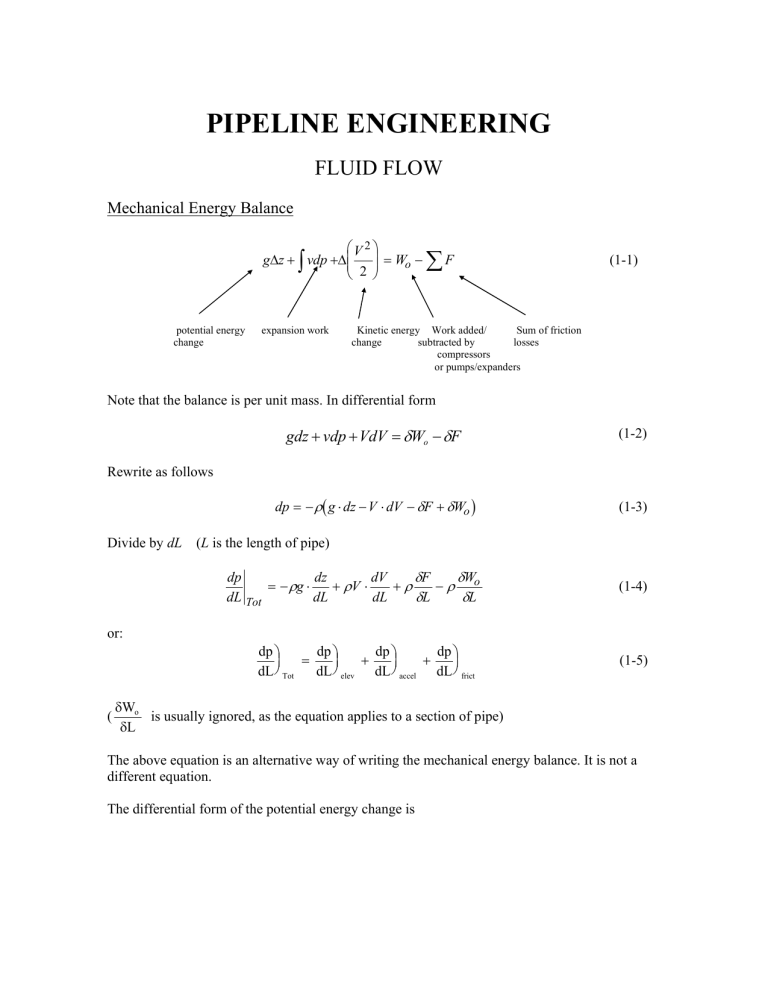
PIPELINE ENGINEERING FLUID FLOW Mechanical Energy Balance ⎛V 2 ⎞ g∆z + vdp +∆ ⎜⎜ ⎟⎟ = Wo − ⎝ 2 ⎠ ∫ potential energy change expansion work ∑F (1-1) Kinetic energy Work added/ Sum of friction change subtracted by losses compressors or pumps/expanders Note that the balance is per unit mass. In differential form gdz + vdp + VdV = δWo − δF (1-2) dp = − ρ ( g ⋅ dz − V ⋅ dV − δF + δWo ) (1-3) Rewrite as follows Divide by dL (L is the length of pipe) dV δW dz δF dp = − ρg ⋅ + ρV ⋅ +ρ −ρ o dL δL dL δL dL Tot (1-4) or: dp ⎞ dp ⎞ dp ⎞ dp ⎞ + = + ⎟ ⎟ ⎟ ⎟ dL ⎠ Tot dL ⎠ elev dL ⎠ accel dL ⎠ frict ( (1-5) δWo is usually ignored, as the equation applies to a section of pipe) δL The above equation is an alternative way of writing the mechanical energy balance. It is not a different equation. The differential form of the potential energy change is dL dZ φ g dZ = g sin φ dL (1-6) Friction losses: We use the Fanning or Darcy-Weisbach equation (Often called Darcy equation) δF = 2V 2 f dL D (1-7) an equation that applies for single phase fluids, only (two phase fluids are treated separately). The friction factor, in turn, is obtained from the Moody Diagram below. Figure 1-1: Moody Diagram Friction factor equations. (Much needed in the era of computers and excel) Laminar Flow Natural Gas Basic Engineering f = 16 Re (1-8) 2 Copyright: Miguel Bagajewicz. No reproduction allowed without consent f = Turbulent Flow 0.046 Re a (1-9) smooth pipes: a=0. Iron or steel pipes a=0.16 ⎛ ε 1 2.51 ⎞ ⎟ = −2 log10 ⎜ + f ⎝ 3.7 D Re f ⎠ Turbulent Flow (Colebrook eqn) (1-10) Equivalent length of valves and fittings: Pressure drop for valves and fittings is accounted for as equivalent length of pipe. Typical values can be obtained from the following Table. Table 1-1: Equivalent lengths for various fittings. Fitting 45O elbows 90O elbows, std radius 90O elbows, medium radius 90O elbows, long sweep 90O square elbows 180O close return bends 180O medium radius return bends Tee (used as elbow, entering run) Tee (used as elbow, entering branch) Gate Valve (open ) Globe Valve (open ) Angle Valve (open) Le D 15 32 26 20 60 75 50 60 90 7 300 170 Pressure Drop Calculations Piping is known. Need pressure drop. (Pump or compressor is not present.) Incompressible Flow a) Isothermal (ρ is constant) dp dV dF ⎞ ⎛ dZ = -ρ ⎜ g +V + ⎟ dL Tot dL dL ⎠ ⎝ dL for a fixed φ ⇒ Natural Gas Basic Engineering V constant ⇒ 3 (1-11) dV = 0 Copyright: Miguel Bagajewicz. No reproduction allowed without consent ⎛δL⎞ δ F = 2V 2 ⋅ f ⋅ ⎜ ⎟ ⎝ D ⎠ (1-12) ⎡ ⎤ L ∆p = − ρ ⎢ g ⋅ ∆Z + 2V 2 ⋅ f ⋅ + F⎥ D ⎣ ⎦ b) Nonisothermal It will not have a big error if you use ρ(Taverage), v(Taverage) ∑ (1-13) Exercise 1-1: Consider the flow of liquid water (@ 20oC) through a 200 m, 3” pipe, with an elevation change of 5 m. What is the pressure drop? Can the Bernoulli equation assuming incompressible flow be used for gases? The next figure illustrates it. Natural Gas Basic Engineering 4 Copyright: Miguel Bagajewicz. No reproduction allowed without consent Figure 1-2: Error in Bernoulli equation In conclusion, if pout − pin ≤ 0.2 − 0.3 using the assumption of incompressibility is OK. pin Compressible Flow (Gases) a) Relatively small change in T (known) Natural Gas Basic Engineering 5 Copyright: Miguel Bagajewicz. No reproduction allowed without consent For small pressure drop (something you can check after you are done) can use Bernoulli and fanning equation as flows ⎛V 2 ⎞ gdz + vdp + d ⎜ ⎟ = -dF ⎝ 2 ⎠ (1-14) g 1 V dF dz + dp + 2 dV = - 2 2 v v v v (1-15) Then but V = v G , where A V = Velocity (m/sec) v = Specific volume (m3/Kg) G = Mass flow (Kg/sec) A = Cross sectional area (m2) Then, 2 g 1 dF ⎛ G ⎞ dV ⎛ G ⎞ dL dz + dp + ⎜ ⎟ = - 2 = -2f ⎜ ⎟ 2 v v v ⎝ A⎠ v ⎝ A⎠ D (1-16) Now put in integral form dp ⎛ G ⎞ g 2+ +⎜ ⎟ v ⎝ A⎠ v ∫ dz ∫ 2 ∫ 2 dV ⎛ G⎞ 1 = −2 ⋅ ⎜ ⎟ ⋅ ⋅ f dL ⎝ A⎠ D V ∫ (1-17) Assume Tav = Tin +Tout 2 (1-18) p p ⎤ 2⎡ pav = ⎢ pin + pout − in out ⎥ which comes from pav = pin + pout ⎦ 3⎣ f av = f(Tin ,Pin )+ f(Tout ,Pout ) 2 ∫ out in ∫ out in p p dp (1-19) p dp (1-20) The integral form will now be Natural Gas Basic Engineering 6 Copyright: Miguel Bagajewicz. No reproduction allowed without consent ρ 2av ⋅ g ⋅ ∆z + ∫ out in p⋅v = Now use ∫ 2 2 dp ⎛ G ⎞ ⎛ Vout ⎞ L ⎛ G⎞ + ⎜ ⎟ ln⎜ ⎟ = −2 ⋅ ⎜ ⎟ ⋅ f av ⋅ ⎝ A⎠ v ⎝ A ⎠ ⎝ Vin ⎠ D (1-21) Z ⋅ R⋅T p M , where M: Molecular weight. Then ρ av = av , which leads to: Z av R Tav M dp M = v Z av RTav ρ M 2 2 pout − pin2 ) = av ( pout − pin2 ) ( 2 RT p av av av ∫ p ⋅ dp = 2 ⋅ Z (1-22) Therefore; ρ g ⋅ ∆z + 2 av ρ av 2 pav (p 2 2 out 2 L ⎛ G ⎞ ⎛V ⎞ ⎛G⎞ − p ) + ⎜ ⎟ ln ⎜ out ⎟ = −2 ⎜ ⎟ f av D ⎝ A ⎠ ⎝ Vin ⎠ ⎝ A⎠ 2 in (1-23) but, Vout ⎛ Zout ⋅ Tout ⎞ pin =⎜ ⎟⋅ Vin ⎝ Zin ⋅ Tin ⎠ pout (1-24) Then ρ g ⋅ ∆z + 2 av ρ av 2 pav (p 2 out 2 2 L ⎛ G ⎞ ⎛ Z ⋅T p ⎞ ⎛G⎞ − p ) + ⎜ ⎟ ln ⎜ ⋅ out out in ⎟ = −2 ⎜ ⎟ f av D ⎝ A ⎠ ⎝ Z in ⋅ Tin pout ⎠ ⎝ A⎠ 2 in (1-25) To calculate Zav Kay’s rule is used. This rule states that the reduced pressure and temperature of the gas is obtained using the average pressure and temperature (as above calculated) and a pseudo critical pressure and temperature. p pr = av, (1-26) pC T Tr = av, (1-27) TC In turn the critical pressure and temperatures are obtained as molar averages of the respective components critical values. pC, = ∑ yi pC ,i (1-28) i T = ∑ yiTC ,i , C (1-29) i With these values the Z factor comes from the following chart: Natural Gas Basic Engineering 7 Copyright: Miguel Bagajewicz. No reproduction allowed without consent Figure 1-3: Natural Gas Compressibility Chart Equation (1-25) can be further simplified. First neglect the acceleration term because it is usually small compared to the others, to obtain: Natural Gas Basic Engineering 8 Copyright: Miguel Bagajewicz. No reproduction allowed without consent ρ av2 g ⋅ ∆z + ρ av 2 pav (p 2 out 2 L ⎛G⎞ − pin2 + 2 ⎜ ⎟ f av = 0 D ⎝ A⎠ ) (1-30) Form this equation we can get G, as follows: ⎡ ⎤ M 2 pav2 g ⋅ ∆z ⎥ 2 2 ⎢ − M p p ( ) Z RT π D ⎢ in out ⎥ − av av G2 = 32 f av L ⎢ 2 Z av RTav Z av RTav ⎥ ⎢ ⎥ ⎣ ⎦ 2 5 But the volumetric flow at standard conditions is given by ps Q = (1-31) G Z s RTs where the M subscript s stands for standard conditions. Therefore: ⎡ 2 ⎤ M pav2 2 p p g ⋅ ∆z ⎥ 5 2 − − in out 2 2 ⎢ 2 Z av RTav π R Z s Ts ⎢ ⎥D Q2 = 2 32 Mps ⎢ 2 Z avTav L ⎥ f av ⎢ ⎥ ⎣ ⎦ ( Now, if ∆z =0, we get Q2 = ) 2 2 π 2 R Z s2 Ts2 ⎡ ( pin − pout ) ⎤ D 5 ⎢ ⎥ 32 Mps2 ⎢ 2Z avTav L ⎥ f av ⎣ ⎦ (1-32) (1-33) which can be rearranged as follows: 2 pin2 − pout = K Q2 where K = (1-34) 64 Mps2 Z avTav f av L and is known to be W× L, a product of a resistant factor W π 2 R Z s2 Ts2 D 5 times the length L. With this, we have W = 64 Mps2 Z avTav f av . π 2 R Z s2 Ts2 D5 To calculate pressure drop we recognize that average pressures are a function of pout , which is unknown. Then we propose the following algorithm: (1) (1) a) Assume pout and calculate pav b) Calculate K (i ) = 64 Mps2 Z av(i )Tav(i ) f av(i ) π 2 R Z s2 Ts2 D5 (i +1 ) b) Use formula to get a new value pout = Natural Gas Basic Engineering 9 pin2 − K (i ) Q 2 Copyright: Miguel Bagajewicz. No reproduction allowed without consent d) Continue until (i+1) (i) pout - pout ≤ε (i) pout Depending on the choice of friction term expression, several formulas have been reported for equation (1-34). They are summarized in the following table. Table 1-2: Different forms of compressible flow equations Natural Gas Basic Engineering 10 Copyright: Miguel Bagajewicz. No reproduction allowed without consent Table 1-2 (continued): Different forms of compressible flow equations Exercise 1-2: Natural gas (84,000 std m3/hr at 49 atm and 38oC) is sent from a gas refinery to a city, through a 16” pipeline. The distance is 170 Km. The gas reaches the other end at ground temperature, (5 oC). The gas to have the following molar fractions: Methane: 98%, ethane: 1.2%, propane: 0.75%, and water: 0.05%. We also assume Re~5 106 and ε/D =0.01. 2 As a first approximation, we recommend using the Panhandle A equation: pin2 − pout = K Q1.855 W= 2.552 × 10-4Tin×s0.855/D4.586 (Wilson G.G., R. T. Ellington and J. Farwalther, 1991, Institute of Gas Technology Education Program, Gas distribution Home Study Course) , where s is the gas gravity (=Mgas/Mair)=0.65 for natural gas), Tin is in oR and D in inches) What is the pressure drop? Natural Gas Basic Engineering 11 Copyright: Miguel Bagajewicz. No reproduction allowed without consent Heat Transfer Effects To account for temperature changes due to heat transfer, we use total energy balance gdz + d (vp) +VdV + du = δ q + δ wo (1-35) where the following is identified: - Potential energy change: g dz - Rate of work done on the fluid element by pressure forces: d(vp) - Kinetic energy change: VdV - Internal energy changes: du - Heat transfer: δ q . This is given per unit mass flowing (Kcal/h)/(m3/h) - Work added: δ wo . This term is due to pumps and compressors. Since we will treat these separately, this term is usually set to zero for pipes. But the heat δ q is given by interactions with the ambient surroundings: πD dL δ q = U (To − T ) G (1-36) where U is the heat transfer coefficient, To is the outside pipe temperature, π DdL = dA (see next figure) and G is the flowrate. Figure 1-4: Area element Then, (ignoring δwo because there are no pumps) to get: ⎛V 2 gdz + dh+ d ⎜ ⎝ 2 ⎞ U (To - T ) DdL ⎟= G ⎠ (1-37) Integrate and solve for hout (use Tav in the heat transfer equation) hout = hin + U (To − Tav ) π DL G ⎡V 2 − V 2 ⎤ − ⎢ out in ⎥ − g ( z2 − z1 ) 2 ⎣ ⎦ (1-38) RTav G G = Z av ⋅ p out M A A (1-39) But Vout = v out ⋅ Natural Gas Basic Engineering 12 Copyright: Miguel Bagajewicz. No reproduction allowed without consent Finally, to obtain the outlet temperature, one would need to obtain it form the enthalpy and pressure in the outlet Tout = Tout ( pout ,hout ) (1-40) The procedure suggested is then: a) Assume Tout, pout (1) b) Use mechanical energy balance to obtain pout (1) c) Use total energy balance to obtain hout (1) d) get temperature Tout e) Go to b) and continue until convergence SCENARIO II One has a turbine or Compressor/pump and needs Wo. We use total energy with δq = 0 and dz =0 dh = δ wo - dV 2 2 (1-41) Integrating, one obtains: wo = ⎛V 2 ⎞ W = ∆h + ∆ ⎜ ⎟ G ⎝ 2 ⎠ (1-42) In this expression, we have wo given in Joules/Kg, W in Joules/sec and h in Joules/Kg. Thus, the work of the compressor/pump is given by: ⎡ ⎛ V 2 ⎞⎤ W = G ⎢ ∆h + ∆ ⎜ ⎟⎥ ⎝ 2 ⎠⎦ ⎣ (1-43) For compressors, W is positive, while for turbines, it is negative. However, ∆h is known for liquids because enthalpy does not vary much with pressure. In addition, there isn’t much temperature change in pumps). However, for gases, ∆h is much harder to obtain. Therefore we go back to the Mechanical Energy equation for pumps/compressors. Indeed, the Bernoulli equation gives ⎡ ⎛ V 2 ⎞⎤ W = G ⎢ ∫ vdp + ∆ ⎜ (1-44) ⎟ ⎥ ≈ G ∫ vdp ⎝ 2 ⎠⎦ ⎣ where the acceleration term has been neglected. For pumps, the density is constant, so one obtains: Natural Gas Basic Engineering 13 Copyright: Miguel Bagajewicz. No reproduction allowed without consent W= G ∆p ρ (1-45) For compressors, one needs to obtain an expression of volume knowing that the evolution is isentropic (or nearly isentropic). Thus, pvn = constant (n=Cp/Cv for ideal gases n>Cp/Cv for 1 real gases). Substituting v = p s n ⎛ 1⎞ ⋅ vs ⋅ ⎜ ⎟ ⎝ ρ⎠ 1 n integrate to get n −1 ⎡ ⎤ n ⎛ ⎞ ⎡ n ⎤ ⎢ pout ⎥ W =G⎢ p v 1 − ⎟ in in ⎜ ⎥ ⎢ ⎥ p ⎣ n + 1⎦ ⎢⎣⎝ in ⎠ ⎦⎥ (1-46) The above expression does not include the compressibility factor. A better expression, which includes the efficiency, is n −1 ⎡ ⎤ n ⎛ ⎞ p ⎡ n ⎤ Z in + Z out 1 ⎢ ⎥ out W =G⎢ RTin ⎜ ⎟ − 1⎥ ⎥ ⎢ n p 1 2 + η ⎣ ⎦ a ⎢⎣⎝ in ⎠ ⎥⎦ (1-47) The efficiency factor is usually between 60 to 80% and normally given by the manufacturer. One expression for such factor is: n −1 ⎡ ⎤ ⎛ pout ⎞ n ⎢ Tin ⎜ − 1⎥ ⎢⎝ pin ⎟⎠ ⎥ ⎢⎣ ⎦⎥ ηa = Tout − Tin (1-48) Finally, the outlet temperature is obtained from n pin vinn = pout vout (1-49) Using the gas law to obtain vin / vout in terms of temperatures and pressures, substituting and rearranging, on e obtains: Tout ⎡ pout ⎤ =⎢ ⎥ Tin ⎣ pin ⎦ n −1 n = [CR ] n −1 n (1-50) where CR is the compression ratio. Normally, manufacturers recommend not exceeding 300 oF at the outlet. Natural Gas Basic Engineering 14 Copyright: Miguel Bagajewicz. No reproduction allowed without consent Exercise 1-3: The natural gas of exercise 1-2, is available originally at 2 atm. Calculate the compression work needed to reach delivery pressure (49 atm) using one compressor. Calculate the outlet temperature and determine the duty needed to cool the gas down to the corresponding inlet conditions. Is it acceptable to use one compressor? We now discuss the compression ratio. This is limited in compressors to the range 1.2 to 6. Extra compressors should be added if the CR >6, and after-coolers need to be added to control the temperature. If more than one compressor is to be used, the practice is to use the same CR for all. Exercise 1-4: Consider two compressors. - Write the power expression for each one assuming the gas is cooled down to its inlet temperature after compression. - Add both expressions to obtain the total work as a function of the intermediate pressure (the rest should not be a variable) - Take first derivative and obtain the desired result that CR1=CR2 Exercise 1-5: Obtain the set of compressors needed to compress the gas of exercise 1-2 properly, that is, limiting the temperature and using the right CR. Natural Gas Basic Engineering 15 Copyright: Miguel Bagajewicz. No reproduction allowed without consent Two Phase Flow Two phase flow has several regimes, which are depicted in the next figure: Dispersed Annular Stratified Froth Wavy Slug Plug Bubble Figure 1-5: Two phase flow regimes The two extreme cases are: - Bubble: Vapor and Liquid in Equilibrium (Benzene 40%, Toluene 60%) Dispersed: Liquid and gas (air and benzene). The latter is common in gas pipelines; the former is common in crude pipelines, especially light crudes. Natural Gas Basic Engineering 16 Copyright: Miguel Bagajewicz. No reproduction allowed without consent One important thing to recognize is that except for the extreme cases, the phases travel at different velocities. Typical velocities are shown in the next table: Table 1-3: Typical velocities of two phase flows REGIME LIQUID VEL(ft/sec) Dispersed Annular Stratified Slug Plug Bubble VAPOR VEL.(ft/sec) Close to vapor <0.5 <0.5 15 (But less than vapor vel.) 2 5-15 > 200 > 20 0.5-10 3-50 <4 0.5-2 To predict the flow patterns, one needs to use the Baker Plot (next Figure) for horizontal pipes (there is a similar one for vertical pipes). Figure 1-6: Two phase flow regimes transitions ⎛W ⎞ ⎛W ⎞ In this diagram, we have Gg = ⎜ g ⎟ , Gl = ⎜ L ⎟ λ , (W in lb/h, A in in2) which are the ⎜ Wg ⎟ ⎝ A ⎠ ⎝ ⎠ superficial velocity of the vapor and the liquid, respectively. In turn, the parameters are given 1147 µ 1/L 3 by λ = 0.463 ρ L ρ g (with densities given in lb/ft3) ψ = (with the surface tension 2/3 σ ρL given in dyn/cm and the viscosity in cp) We note that: λ and ψ depend on the fluid property only 1) 2) Gl depends on the ratio of flows (Known beforehand. Not a design parameter) Natural Gas Basic Engineering 17 Copyright: Miguel Bagajewicz. No reproduction allowed without consent Gg depends on the vapor/gas superficial velocity. It can be modified changing the diameter Transition boundaries are not at all that sharp. 3) 4) From this diagram, we notice that following change of regimes in a pipe. As the pressure drop is large, then the density of the vapor is lower. 1) λψ 2) ρg 1 1 λ ρg ⇒ ⇒ Gl λψ ρg Gg 1 λ ρg ⇒ Abscissa decreases ⇒ Ordinate increases Thus trajectories are always "up" and "to the left". Thus a bubbly flow may become, plug, slug or annular, an annular may become wavy or dispersed, depending on the starting position in the plot, and so on. PRESSURE DROP Lockart and Martinelli (1949) developed one of the first correlations. It is based on multiplying the pressure drop obtained by considering the vapor phase occupying the whole pipe, by a factor ∆pTwoPhase = φ 2 ∆pVaporPhase In turn, the correction factor is given by φ = aX b , where X = ∆pLiquidPhase ∆pVaporPhase (1-51) . The following table gives some typical values of the corresponding constants: Table 1-4: Constants for Lockart and Martinelli’s correlation a b Bubble Slug Stratified (horizontal) Plug Annular 14.2 1190 15400 27.3 4.8 -0.3125 D(in) 0.75 0.82 1 0.86 0.343-0.021 D(in) We notice that there are several more modern correlations, which will be explored later. In turn, the pressure drop due to gravity, is given by dp ⎞ = ⎡ε g ρ g + (1 − ε g ) ρl ⎤⎦ g sin θ ⎟ dL ⎠ gravity ⎣ (1-52) where ε g is the (void) fraction of gas. We omit the pressure drop due to acceleration. Natural Gas Basic Engineering 18 Copyright: Miguel Bagajewicz. No reproduction allowed without consent Hydrate Formation Hydrates are crystalline structures between water and hydrocarbons. One typical example is given in the figure below: Cage of water molecules CH4 molecule in the center Figure 1-7: Methane Hydrate The next figure shows the Pressure-Temperature diagram of water-hydrocarbon systems. Curve 1-1 represents the curve for vapor pressure of the hydrocarbon. Figure 1-8: Generic Hydrate P-T diagram Natural Gas Basic Engineering 19 Copyright: Miguel Bagajewicz. No reproduction allowed without consent The next figure shows some specific cases of hydrocarbons: Figure 1-9: Hydrate P-T diagram for various hydrocarbons Clearly, in high pressure pipelines, favorable thermodynamic conditions for hydrate formation can be encountered. It is therefore important to keep in mind that these conditions need to be avoided. These hydrates can be prevented from forming through heating, pressure change (not a choice in pipelines) and the introduction of inhibitors. These inhibitors are salts, alcohols, glycols, ammonia and MEA. The most widely used is methanol. The next figure shows the depression of hydrate formation temperature observed for various hydrates. Figure 1-10: Hydrate temperature formation depression Natural Gas Basic Engineering 20 Copyright: Miguel Bagajewicz. No reproduction allowed without consent Pipeline Costs Historical pipeline and compressors installed cost data were obtained from the Oil & Gas Journal special report on Pipeline Economics, September 3, 2001. Pipeline per mile cost distribution for different pipe diameters and compressor installed cost for different horsepower requirement are plotted in the following figure. All cost figures are updated to 2005 dollars using Marshal & Swift cost indexes. 3000 2500 2000 y = 43.2x + 100 1500 1000 500 0 0 10 20 30 40 50 Figure 1-11: Pipe average cost (k$/mile) vs. ID 100000 80000 y = 1.65x 60000 40000 20000 0 0 10000 Figure 1-12: 20000 30000 40000 Compressor cost (k$) vs. horsepower Fixed Capital Investment were calculated by adding the installed cost of a pipe length (assumed 5000 miles) and the cost of all required recompression stations. The Fixed Capital Investments obtained are then divided by the pipe length to obtain a per mile cost profile for different flow rates. The curve in the next figure shows that this cost profile takes a logarithmic shape. Natural Gas Basic Engineering 21 Copyright: Miguel Bagajewicz. No reproduction allowed without consent B$ 0.005 B$ 0.005 y = 0.001659x + 0.001108 B$ 0.004 B$ 0.004 B$ 0.003 B$ 0.003 B$ 0.002 B$ 0.002 B$ 0.001 B$ 0.001 B$ 0.000 0 0.2 0.4 0.6 0.8 1 1.2 1.4 1.6 BSCFD Figure 1-13: Pipeline fixed cost (b$/mile) vs. capacity (BSCFD) A linear correlation gives the following form: FCI ( B$ / mile) = 0.001659 * Capacity ( BSCFD) + 0.001108 Operating costs for pipelines were estimated as follows; an average of 5 operators is assumed to be the requirement for each compression station, with an hourly wage of $21. Direct supervisory and clerical labor is assumed to be 20% of operating labor. Compressor fuel requirement is estimated at 8,000 Btu / BHP-HR, and fuel cost at $2.5 per million Btu. Maintenance cost is assumed to be 7% of the FCI for compressors and 3% for pipes while insurance is 1% for compressors and 0.4% for pipes. Operating cost per pipeline mile versus capacity is plotted in the next figure: B$0.000250 B$0.000200 y = 7E-05x + 4E-05 B$0.000150 B$0.000100 B$0.000050 B$0.000000 0 0.5 1 1.5 Figure 1-14: Pipeline per mile annual operating cost vs. capacity This estimate should be reasonable with about 40% accuracy. Similar linear approximation to that of the FCI is assumed. Linear regression was used to estimate the operating cost Natural Gas Basic Engineering 22 Copyright: Miguel Bagajewicz. No reproduction allowed without consent dependence of the capacity, ignoring capacities less than 100 MMSCFD. This gave a general correlation of the following form: Oper.Cost ( B$ / mile / year ) = 0.00007 * Capacity ( BSCFD) + 0.00004 Exercise 1-9: Consider the pipeline of Exercise 1-8: - Vary the pipeline maximum pressure (1200 psia) to some lower and higher value. Adjust the diameter accordingly and calculate the number of recompression stations. - Calculate the cost. Can you say that 1200 psia is the right pressure? Pipeline Looping Pipeline looping is the practice of designing pipelines with segments run in parallel. This practice increases the pipeline flow capacity without altering the final pressure. If temperature is close to ambient temperature, the location of a loop does not change the final delivery pressure. However, when temperature changes substantially, then the location of a loop has an influence. Thus, in these cases, for example, it is recommended to loop in the upstream region, where the gas is hotter. This allows the gas to cool down faster and therefore increase the delivery pressure. Consider the following example: A 100 Km length (20” OD) pipeline is used to send 289 MMSFD at an inlet pressure of 1,200 psia and a temperature of 45 oC. The pipe roughness is 750 µ inches, and a soil temperature of 10 oC. Three alternatives were studied for this pipeline. a) No looping, b) Looping the first 25 Km, and c) Looping the last 25 Km. The results of a simulation are shown in the next figure: Figure 1-15: Natural Gas Basic Engineering Results from Looping 23 Copyright: Miguel Bagajewicz. No reproduction allowed without consent Exercise 1-10: Verify the results of figure 1-15 using the simulator. Retrograde condensation One very common phenomenon in pipelines is retrograde condensation. Consider the P-T plot of the next figure. It corresponds to a gas with the following composition: Methane: 93.47 %, Ethane: 3.52%, Propane: 0.585%, n-butane: 0.16%, i-butane: 0.11%, pentane: 0.055%, ipentane 0.05%, hexane: 0.09%, heptane: 0.04%, octane: 0.03%, nonane: 0.01%, CO2: 0.0545, N2: 1.34%. Assume a 15”, 200 Km pipeline starts at 60 atm and 15 oC. If the external temperature is 5 oC (U=1 BTU/hr-ft2oF), then it is clear that there will be liquid formation in this pipeline, even if the operation is isothermal. Figure 1-16: P-T diagram of example gas and retrograde condensation Interestingly, if the pressure at the other end is low enough, then the liquid might vaporize again. This means that the pressure drop regime inside the pipe might change and one has to be careful in performing the simulations. Exercise 1-11: Generate the answers for the above example using the simulator. Change the pipe diameter and the length to verify the statements. Natural Gas Basic Engineering 24 Copyright: Miguel Bagajewicz. No reproduction allowed without consent Pipeline Optimization Process J-Curve Analysis Conventional Pipeline design methods, which rely mostly on hand calculations or at best on simple spreadsheet suggest that the compressor size and the pipe diameter be varied and the cost of service ($/(m3*Km) for the first year be plotted as a function of flowrate. Typical assumptions are that there is no volume buildup in the pipe, the time value of money is neglected and that the facilities are designed to sustain the flows. For example, Figure 1-17 shows one such exercise performed for three different diameters and parametric at different maximum operating pressures (MOP) and compression ratios. Efficient operating ranges that are flat are preferred Figure 1-17: J-Curves for various diameters Exercise 1-12: Explain why J-curves go through a minimum. Natural Gas Basic Engineering 25 Copyright: Miguel Bagajewicz. No reproduction allowed without consent Optimization Parameters J-Curves are a simplistic first approach but one that can provide a first approximation to the right diameter and compressors. Thus one needs to establish - - - Route: In most cases this is defined by a variety of other factors and given to the designer. Pipeline Initial Capacity: Most pipelines are constructed taking into account the fact that demand at the receiving end(s) will increase through time. Thus, one is faced with the decision of designing for future capacity and underutilize the pipeline for some time or design for current or more short term capacity and use loops to expand later. Expansions: If capacity expansions are considered, then they need to take place through looping. Not only the new loop has to be designed, but its timing and capacity be selected. Maximum operating pressure: This choice has already been considered in constructing the J-Curves. However, in more complex situations, one is faced with multiple delivery points with different delivery pressures, etc. Pipe Size: This choice has already been considered in the J-Curve selection but needs to be revisited anyway in view of the influence of the other factors. Load Factor: This factor is the ratio between the average daily volume delivered divided by the peak volume. If this ratio is too small, then storage facilities for inventory holding (salt caverns, underground caverns, abandoned reservoirs, etc if available, or large LNG or high pressure, CNG, storage tanks) are more convenient than more powerful compressors and larger diameters. The issue to resolve is when these are substituted by inventory holding sites. In addition, the question remains where these holding sites should be located. Compressor Station Spacing: While an earlier exercise suggests that when multiple compressors are used it is best to keep the compression ratio equal, this hypothesis needs verification. Reciprocating compressors are chosen when the power requirement is smaller than 5,500 Kw. Compression ratios recommended for centrifugal compressors are generally in the range of 1.25 to 1.35 and smaller than 1.5 for reciprocating compressors. Exercise 1-13: Consider the pipeline of Exercise 1-8: - Assume two compression stations will be used. - Determine (by inspection and using a simulator what is the best compression ratio for each compressor. Aim at minimizing total work only. - Heating and Cooling: Clearly, cooling leads to significant savings because pressure drop is reduced. However, money needs to be spent to install and run the coolers. Thus the trade-off needs to be resolved. Natural Gas Basic Engineering 26 Copyright: Miguel Bagajewicz. No reproduction allowed without consent Exercise 1-14: Consider the shown in the following figure Supply: 5,722,000 m3/d Km 0 115 143 323 638 550 609 613 630 Km 650 Supply: 10,407,840 m3/d 18,240 m3/d 2,148,200 m3/d 2,832,000 m3/d 336,,000 m3/d 64,600 m3/d 384,000 m3/d 3,617,400 m3/d 6,595,200 134,400 m3/d m3/d - The piping is in the ground and is not insulated. Assume a ground temperature of 25oC and a ground conductivity of 0.7 W/(m oC). The gas elevation profiles are provided in the following table: Km Elevation (m) 0 42 115 7 143 14.93 323 60 550 10 609 120 613 122 630 235 638 470 650 890 - The gas ((1.9% methane, 5% Ethane, 2% propane, 1% n-butane and 0.1% npentane) is supplied at the two points indicated in the diagram at 1,367 kPa and 35oC in the first station (Km 0), and 1520 kPa and 30oC in the second (Km 143). - Determine using simulations a) Piping diameter, b) Compressors at the supply station, c) cooling required. Do not use a pressure above 5,600 Kpa. Use cost data provided above. - Will new compressors be needed/beneficial? Natural Gas Basic Engineering 27 Copyright: Miguel Bagajewicz. No reproduction allowed without consent OPTIMAL DESIGN Natural Gas Basic Engineering 28 Copyright: Miguel Bagajewicz. No reproduction allowed without consent Natural Gas Basic Engineering 29 Copyright: Miguel Bagajewicz. No reproduction allowed without consent Natural Gas Basic Engineering 30 Copyright: Miguel Bagajewicz. No reproduction allowed without consent Natural Gas Basic Engineering 31 Copyright: Miguel Bagajewicz. No reproduction allowed without consent Natural Gas Basic Engineering 32 Copyright: Miguel Bagajewicz. No reproduction allowed without consent

